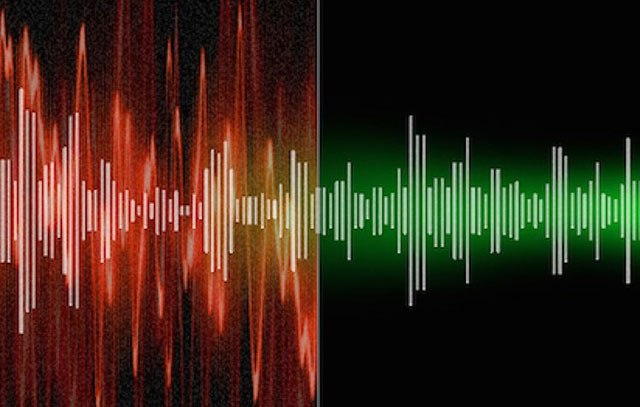 Audio noise reduction, also known as denoising, removes unwanted noise from audio recordings. Noise is an undesirable disturbance that obscures the recorded signal in an audio file, making it difficult to hear and understand the intended message. Audio file denoising techniques reduce or eliminate unwanted noise from audio recordings, resulting in clearer and more intelligible sound.
Audio noise reduction, also known as denoising, removes unwanted noise from audio recordings. Noise is an undesirable disturbance that obscures the recorded signal in an audio file, making it difficult to hear and understand the intended message. Audio file denoising techniques reduce or eliminate unwanted noise from audio recordings, resulting in clearer and more intelligible sound.
Click here to try our free online Audio File Denoiser.
Noise reduction is an essential part of audio processing and restoration, as it can significantly improve the quality of audio recordings. With the widespread use of digital audio recording and editing tools, capturing and editing audio has become much easier. Still, it has also become more challenging to eliminate noise from audio files. Noise can be introduced in various ways, such as environmental factors like background noise, electrical interference, microphone or recording equipment limitations and even digital compression. Effective audio file denoising techniques can help minimize or remove such noise, making the audio recording clearer, easier to understand and more pleasant to listen to.
Audio file denoising is not a new concept and has been around for a long time. In the past, audio denoising techniques were manual and involved removing noise from recordings by cutting and splicing the audio tape. However, as digital audio processing and editing tools emerged, automated audio denoising methods became more prevalent. Digital audio denoising techniques involve using various mathematical algorithms to remove unwanted noise from audio files. The first attempts at digital audio denoising involved spectral subtraction techniques, and then several other methods were introduced, including Wiener filtering, median filtering, wavelet transform and nonlinear filtering.
With the introduction of machine learning and artificial intelligence, denoising techniques have become more sophisticated and effective. Machine learning algorithms can learn from a large dataset of audio files to identify noise patterns and remove them automatically from new audio recordings. As a result, audio file denoising techniques will become even more efficient and effective as technology advances.
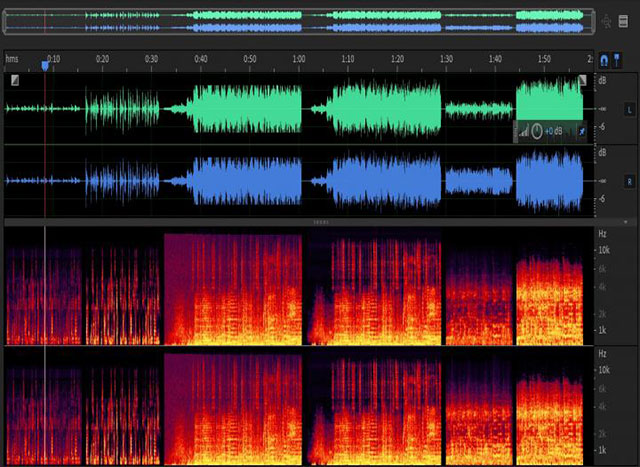 Impulse noise is a type of noise that occurs suddenly in an audio file, resulting in a sharp, short-duration burst of noise. Electrical interference, faulty connections, or poor signal quality often cause it. Impulse noise is sometimes called 'clicks' or 'pops,' and its distinct sharp sound can easily be identified.
Impulse noise is a type of noise that occurs suddenly in an audio file, resulting in a sharp, short-duration burst of noise. Electrical interference, faulty connections, or poor signal quality often cause it. Impulse noise is sometimes called 'clicks' or 'pops,' and its distinct sharp sound can easily be identified.
Gaussian noise is a type of noise that's characterized by its random distribution and is often referred to as 'white noise.' This type of noise is typically produced by thermal noise in electronic components and can be found in almost all audio recordings to some degree. It's called 'white noise' because it contains all frequencies at equal power, just as white light has all colors at equal intensity.
Periodic noise is a type of noise that occurs at regular intervals, usually due to some cyclical variation. Mechanical vibrations, electrical interference, or environmental factors such as wind or rain often cause it. Periodic noise is typically heard as a low-frequency hum or a high-frequency buzz.
Broadband noise is a type of noise that spans a wide range of frequencies, and it's often caused by electrical interference or other external factors. This type of noise can be complicated to remove from audio recordings because it affects a broad range of frequencies and can be masked by other sounds in the recording.
Transient noise is a type of noise that occurs suddenly and lasts for a brief period, typically less than a second. Sudden environmental changes, such as the sound of a passing car or a door slamming, often cause this type of noise. Transient noise can be particularly challenging to remove from audio recordings because it's often mixed with desired audio content.
Understanding the different types of noise in audio files is essential for effective audio file denoising. By identifying the noise present in a recording, audio engineers and software tools can choose the most appropriate denoising techniques to eliminate unwanted noise from the audio file.
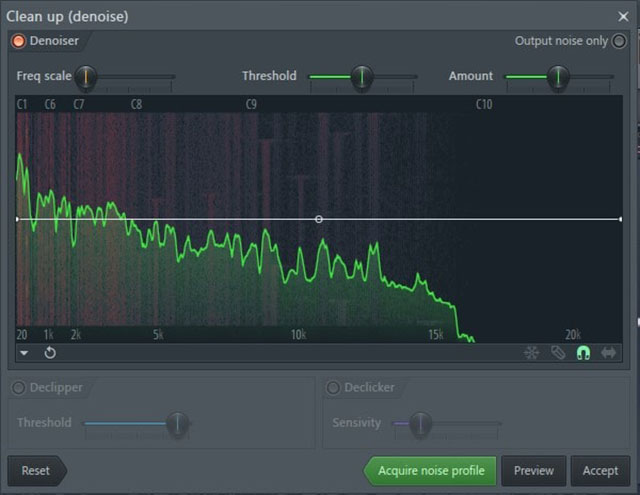 Audio file denoising is a process that involves removing noise from audio files. Various methods are used for audio file denoising, each with advantages and disadvantages. This section will discuss some of the most commonly used methods for audio file denoising.
Audio file denoising is a process that involves removing noise from audio files. Various methods are used for audio file denoising, each with advantages and disadvantages. This section will discuss some of the most commonly used methods for audio file denoising.
Spectral Subtraction is one of the most widely used methods for audio file denoising. It involves subtracting the estimated noise spectrum from the noisy signal spectrum in the frequency domain. The noise spectrum is calculated using a portion of the signal where there is only noise present. This method is effective for stationary noise reduction but may distort the signal.
Advantages:
Disadvantages:
Wiener Filtering is a method used for signal processing that involves reducing the noise in the signal while preserving the signal's information. It's based on a statistical approach, where a set of signal and noise characteristics are estimated. This method is effective in reducing noise, but it may also result in signal distortion.
Advantages:
Disadvantages:
Median Filtering is a signal processing method based on the median of the signal's values. It's particularly effective for impulse noise removal. This method involves replacing signal values considered outliers when compared with the median of the surrounding values.
Advantages:
Disadvantages:
Wavelet Transform is a mathematical technique that decomposes a signal into wavelets. It's used in audio file denoising by removing noise from each wavelet sub-band. This method effectively reduces non-stationary noise but may also cause signal distortion.
Advantages:
Disadvantages:
Nonlinear filters are a type of filter that's based on a nonlinear function. This function is applied to the signal to reduce the noise. This method is effective for removing impulsive noise and for image denoising.
Advantages:
Disadvantages:
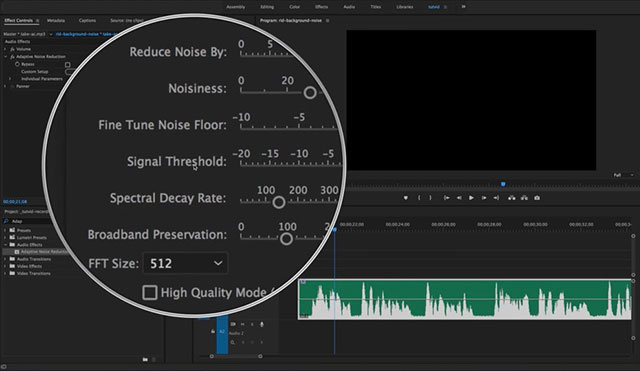 Audio file denoising involves using various methods to remove unwanted noise from audio signals. While the methods discussed above can be highly effective, several factors must be considered when selecting the best method for a particular application.
Audio file denoising involves using various methods to remove unwanted noise from audio signals. While the methods discussed above can be highly effective, several factors must be considered when selecting the best method for a particular application.
The signal-to-noise ratio (SNR) is an essential factor to consider when denoising audio files. SNR is the ratio of the signal power to the noise power; a higher SNR indicates a better quality signal with less noise. The selection of denoising methods may depend on the SNR of the audio signal.
The audio file format is another factor to consider when selecting a denoising method. Some methods may be more effective for specific audio file formats than others. For example, some may be more effective for .wav files, while others may work better for .mp3 files.
The time-frequency resolution of a denoising method refers to its ability to accurately separate signal and noise components in both the time and frequency domains. A method with better time-frequency resolution can more effectively remove noise without affecting the signal.
The computational complexity of a denoising method is also an essential factor to consider. Some methods may require more computational resources, such as processing time or memory, which may not be suitable for real-time applications or low-power devices.
Finally, the effectiveness of a denoising method is a critical factor to consider. While some methods may be more computationally complex, they may also be more effective at removing noise from audio files. It's essential to consider the balance between effectiveness and computational complexity when selecting a denoising method.
By considering these factors, selecting the most appropriate denoising method for a given audio file is possible, resulting in higher-quality audio with less noise.
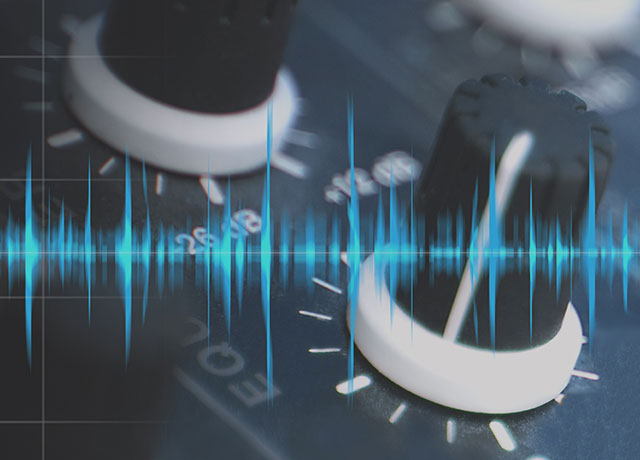 Audio file denoising has a wide range of applications in various fields. This section will discuss some of the most critical applications of audio file denoising.
Audio file denoising has a wide range of applications in various fields. This section will discuss some of the most critical applications of audio file denoising.
In music recording and production, audio file denoising removes unwanted noise from audio recordings. This noise can be introduced by various factors such as electrical interference, background noise and equipment noise. By denoising the audio files, the final output is of higher quality and clearer sound.
Audio restoration involves repairing and enhancing damaged, distorted or degraded audio recordings. In the case of historical audio recordings, the degradation of the audio files may be due to aging or poor storage conditions. Audio file denoising is essential in restoring the audio to its original quality.
In speech recognition, denoising is used to remove unwanted noise from the audio signal to improve the accuracy of speech recognition systems. By denoising the audio files, the speech signals become more distinguishable, and the recognition system can accurately recognize spoken words.
Audio forensics is the application of audio analysis techniques to investigate crimes or other legal disputes. In this field, audio file denoising removes unwanted background noise from audio recordings to enhance speech and other sounds intelligibility. This is useful in the analysis of covert recordings or low-quality recordings, where it may be difficult to hear or understand what is being said.
Overall, audio file denoising is crucial in various fields, including music recording and production, audio restoration, speech recognition and audio forensics. By removing unwanted noise from audio files, the quality and clarity of the sound are improved, making it easier to analyze, understand and enjoy.
Audio file denoising is a complex process that requires careful consideration of various factors. Although several methods have been developed to reduce noise in audio files, these methods have several challenges and limitations.
One of the main challenges of audio file denoising is over-filtering. Over-filtering occurs when too much noise is removed from an audio file, resulting in a loss of important information or signal distortion. This can happen when the filter used for denoising is too aggressive or when the parameters are set incorrectly.
Another challenge is finding the right balance between noise reduction and signal distortion. In some cases, it may not be possible to fully remove all noise from an audio file without also removing some of the underlying signal. This is especially true in cases where the noise is similar in frequency to the desired signal.
Another challenge in audio file denoising is the noise type and level variation. Different types of noise require other methods for effective denoising, and the noise level in an audio file can also affect the efficacy of varying denoising methods. For instance, periodic noise can be hard to remove using some techniques.
Finally, there is a limited availability of training data for audio file denoising algorithms. In some cases, obtaining high-quality training data for a specific type of noise may be difficult, making it challenging to develop an effective denoising algorithm.
Despite these challenges, audio file denoising has a wide range of applications and continues to be an active area of research.
Audio file denoising removes unwanted noise from audio signals, a critical step in various applications such as music recording and production, speech recognition, audio restoration and audio forensics. The most common types of noise in audio files are impulse, Gaussian, periodic, broadband and transient noise. There are various methods for audio file denoising, including spectral subtraction, Wiener filtering, median filtering, wavelet transform and nonlinear filtering.
Several factors should be considered when denoising audio files, such as the signal-to-noise ratio, audio file format, time-frequency resolution, computational complexity and effectiveness. There are also challenges and limitations associated with audio file denoising, including over-filtering, a trade-off between noise reduction and signal distortion, variation in noise type and level and the limited availability of training data.
As technology advances, there is a growing need for more sophisticated and accurate methods for audio file denoising. In recent years, deep learning techniques such as neural networks have shown great promise in denoising audio signals. These methods have the potential to address some of the challenges and limitations of traditional denoising methods, and further research is needed to explore their full potential.
Audio file denoising is an essential process that can significantly improve the quality of audio signals in various applications. It's critical to carefully consider the factors affecting denoising effectiveness when selecting a method. It's also necessary to avoid over-filtering, which can lead to signal distortion. As denoising technology evolves, deep learning techniques such as neural networks are expected to become increasingly important. In conclusion, audio file denoising is an ever-evolving field and staying up-to-date with the latest developments is critical for achieving the best possible results.